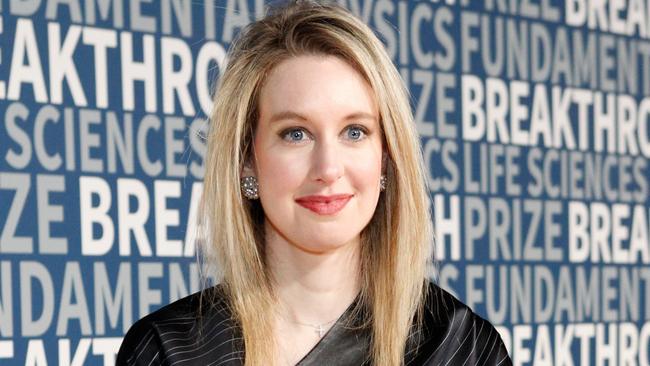
For no particular reason, my summer has been filled with con men. Some old, some young, all charming and all cheats. Happily, it’s been from a safe distance, reading about, watching and listening to some shocking swindlers. Why the fascination?
Each story is a jumble of one, two or more of the deadly sins. And there is something risible about the victims, too. It couldn’t happen to me or you. Or could it?
First up was a re-run about Bernie Madoff and his monumental pyramid scheme that wrecked countless lives over a decades-long fraud. A week later, it was Fyre — The Greatest Party That Never Happened , a Netflix documentary about a music festival in the Caribbean for the rich, the beautiful and the really, really stupid. The scamming promoter sold people a social-media mirage and, unbelievably, some kooks paid $250,000 for tickets. The scam veers from laugh-out-loud to open-mouthed disbelief at how human beings behave, both the fraudster and the defrauded.
Then it was The Australian’s top-rating terrific podcast Who the Hell is Hamish? The series by award-winning journalist Greg Bearup recounts a wicked trail of emotional and financial wreckage by Sydney-based conman Hamish McLaren, who awaits sentencing for his deception.
Next up, Dirty John, another new Netflix series about John Meehan, a sociopath whose wicked lies and ghastly exploits read like fiction. Except they are fact.
But the worst con wasn’t by any of these men. The worst con artist was a woman, a very young woman. She features in a mesmerising new podcast called The Drop Out. She is also the subject of John Carreyrou’s forensic book, Bad Blood — Secrets and Lies in a Silicon Valley Startup. She stars in a new HBO doco due out next month called The Inventor — Out for Blood in Silicon Valley. Here is a poster girl for gender equality, if you will, proving women can be just as bad as men.
And the story of Elizabeth Holmes is very, very bad. Though she shares much in common with con men, another part to her story deserves scrutiny.
The rise of Holmes reveals another, darker side to female empowerment. Feminist warriors won’t tell you how gender works a treat for women who seek to lie, con and defraud. The feminists talk only about woeful discrimination by men against women, glass ceilings that can’t be cracked, boys clubs and men’s networks that stop women from achieving their true potential.
Holmes reached her full potential as a con artist, aided and abetted by being a woman. She dropped out of Stanford after two semesters of chemical engineering with a mission to transform blood testing across the globe. Phyllis Gardner, a professor of medicine for more than 30 years, spotted delusion right away. She told the freshman at their first encounter in 2002 that her idea was not scientifically possible.
Holmes moved on to another professor, Channing Robertson. The middle-aged man was mesmerised by her and not long after joined the board of Theranos, the company Holmes set up in 2003 when she was 19 years old.
Holmes used her female charm to cajole many others, to trick and defraud legions of men, young and old. And women too, mostly young women, many of whom left Theranos disillusioned and disgusted.
Plenty of men fell out with Holmes eventually, but it is striking how many men fell for Holmes and her story. She spruiked a revolution delivered via a small device to extract a pinprick of blood, the sample fed into a Theranos machine called the Edison, which would run hundreds of tests simultaneously in an hour.
Before her story turned rancid, Holmes hit all the sweet spots. She was young and gorgeous with big blue eyes, articulate and passionate about her claim to change the world. Holmes dazzled a bunch of pale, stale males who joined her board. The all-male board included Henry Kissinger, then US Marine Corps general John Mattis, who became secretary of defence, former secretary of state George Shultz, and other men who made their millions in Silicon Valley. Shultz was taken with her “purity of motivation”. Mattis was impressed with her “well-honed sense of ethics”. Park these thoughts.
Holmes claimed she was revolutionising blood testing, reducing medical costs, even saving lives on the battlefields of Afghanistan. Brilliant young graduates, even senior people from Apple, flocked to work with the next Steve Jobs.
Holmes raised $US700 million from investors — again lots of men, including Oracle founder Larry Ellison, venture capital firm Draper Fisher Jurvetson, the Walton and De Vos families, and Rupert Murdoch. Theranos also signed a game-changing deal with pharmacy chain Walgreens.
The media loved Holmes too. The blonde, self-made billionaire, worth $4bn at her height, was a female success story in the boys club of Silicon Valley.
Her pitch to be the modern-day cross between Marie Curie and Steve Jobs was kind of sexy. Though more Jobs than Curie. Holmes deliberately dressed like her icon, copying the Jobs uniform of black skivvies and trousers. She even changed her voice to a weirdly slow and low baritone.
A brilliant woman in a man’s world was forced to do this to get ahead? Or a cunning young woman exploiting her gender to con the world? Undoubtedly, both.
Business journalists know how this goes. A picture of a pretty young woman makes the front page, no matter how small the news value or how shallow her achievement. It breaks the long run of grey men in suits. The media, drunk on the Holmes Kool-Aid, were so excited to promote gender diversity that they didn’t listen for alarm bells. Holmes was plastered over the media, scoring covers and profile puff pieces, appearing on TV, collecting awards and addressing rapturous crowds. Introducing the inventor at an event, Bill Clinton was especially excited. Of course.
Did Holmes cash in on lashings of gender virtue-signalling by men too? No doubt. Just like those Male Champions of Change in Australia, male board directors who flock to promote women because it gives them a public glow of goodness, the men around Holmes gained gender cred by boosting her. Except their outer glow blinded them from seeing the red flags about her poor leadership and her false claims about Theranos technology and revenues. As Carreyrou observed, there was also a dose of FOMO — a fear of missing out.
That said, Holmes’s skin-deep CV piqued the interest of Carreyrou. Why not others? There is a reason, writes The Wall Street Journal investigative reporter, that Nobel prize winners in medicine are in their 60s. It takes time to develop, test and authenticate genuine medical innovations. This Stanford dropout was in a rush, leading a company that lied to patients, investors and even staff.
Carreyrou’s first explosive report about this con woman ran in October 2015. Holmes claimed Theranos machines could run hundreds of blood tests from a single drop of blood. That was untrue. The tests that it did run were often faulty. Holmes ran fake tests to convince investors and her board.
Holmes and her chief operating officer Ramesh “Sunny” Balwani set up silos within Theranos, forbidding staff members from communicating with other sections. Employees were routinely sacked on the spot for raising questions about the technology. They were threatened with lawsuits, and dossiers of information on them were collected for “leakage”.
The Theranos offices were gripped by a culture of secrecy, fear and retribution
Holmes was at the centre of this cult-like story of a tech girl genius. Even as the myth exploded, she responded to critics by saying: “This is what happens when you work to change things. First, they think you’re crazy, then they fight you, and then all of a sudden you change the world.” Employees chanted “f..k you, Carreyrou” over and over again at a staff meeting.
As Carreyrou continued his forensic exposes in the Journal, Theranos staff members created a Space Invader game with Carreyrou as the villain.
The house of Holmes came crashing down in March last year when the SEC charged her and Balwani with widespread fraud.
Holmes settled with the SEC and has been banned from running a public company for 10 years. Theranos closed its doors six months later. Holmes and Balwani are awaiting trial for other offences that could put them in prison for 20 years.
The most despicable con was inflicted on people who used dodgy Theranos blood tests to make decisions about their lives.
So, the next time someone says that more women are the antidote to a toxic culture, remember that women can be bullies, harassers, and fraudsters too.




To join the conversation, please log in. Don't have an account? Register
Join the conversation, you are commenting as Logout